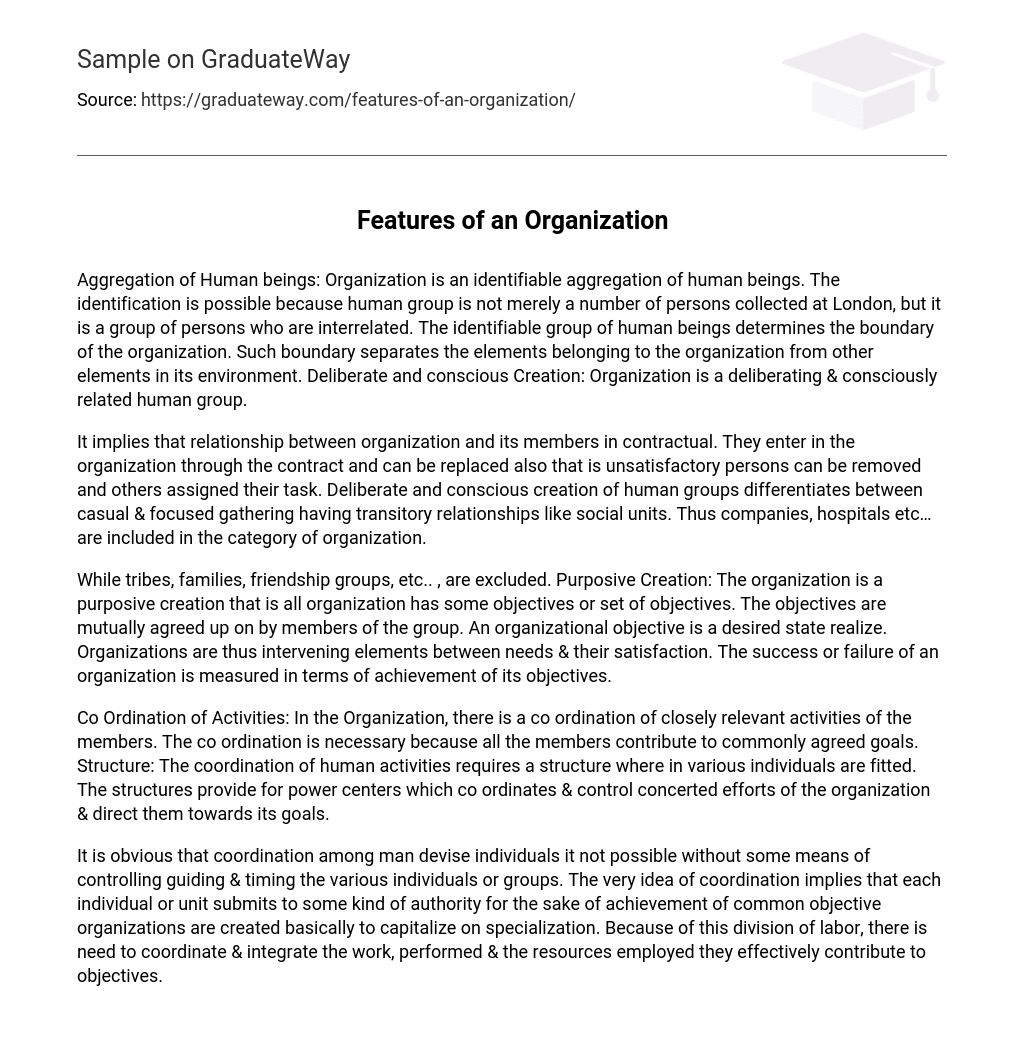The gathering of individuals in an organization is not a random occurrence in London. Rather, it involves interconnected people who share relationships with each other. The organization is defined by the boundary that separates this identifiable group from other elements in their surroundings. This intentional and conscious formation takes place when a group of individuals deliberately come together to establish an organization.
It can be inferred that the relationship between an organization and its members is contractual. Members enter the organization through a contract and can also be replaced, meaning unsatisfactory individuals can be removed and others can be assigned their tasks. This intentional and conscious formation of human groups distinguishes them from casual gatherings with transient relationships, such as social units. Therefore, companies, hospitals, and similar entities fall into the classification of organizations.
Tribes, families, and friendship groups do not fulfill the requirements to be classified as organizations. In contrast, organizations are intentionally established by members who share common goals. These objectives serve as desired results that need to be achieved. Organizations act as intermediaries by connecting needs with their fulfillment. The effectiveness of an organization is determined by its ability to successfully accomplish its objectives.
In the organization, there is a coordination of closely relevant activities among the members. This coordination is necessary because all members contribute to commonly agreed upon goals. To coordinate these human activities, a structure is required in which various individuals are fitted. The structures provide power centers which coordinate and control the concerted efforts of the organization, directing them towards its goals.
It is evident that coordination among human individuals is impossible without some form of control, guidance, and timing for the various individuals or groups. The concept of coordination implies that each individual or unit must submit to authority in order to achieve a common objective. Organizations are primarily established to take advantage of specialization. This division of labor necessitates the coordination and integration of work and resources to effectively contribute to objectives.





